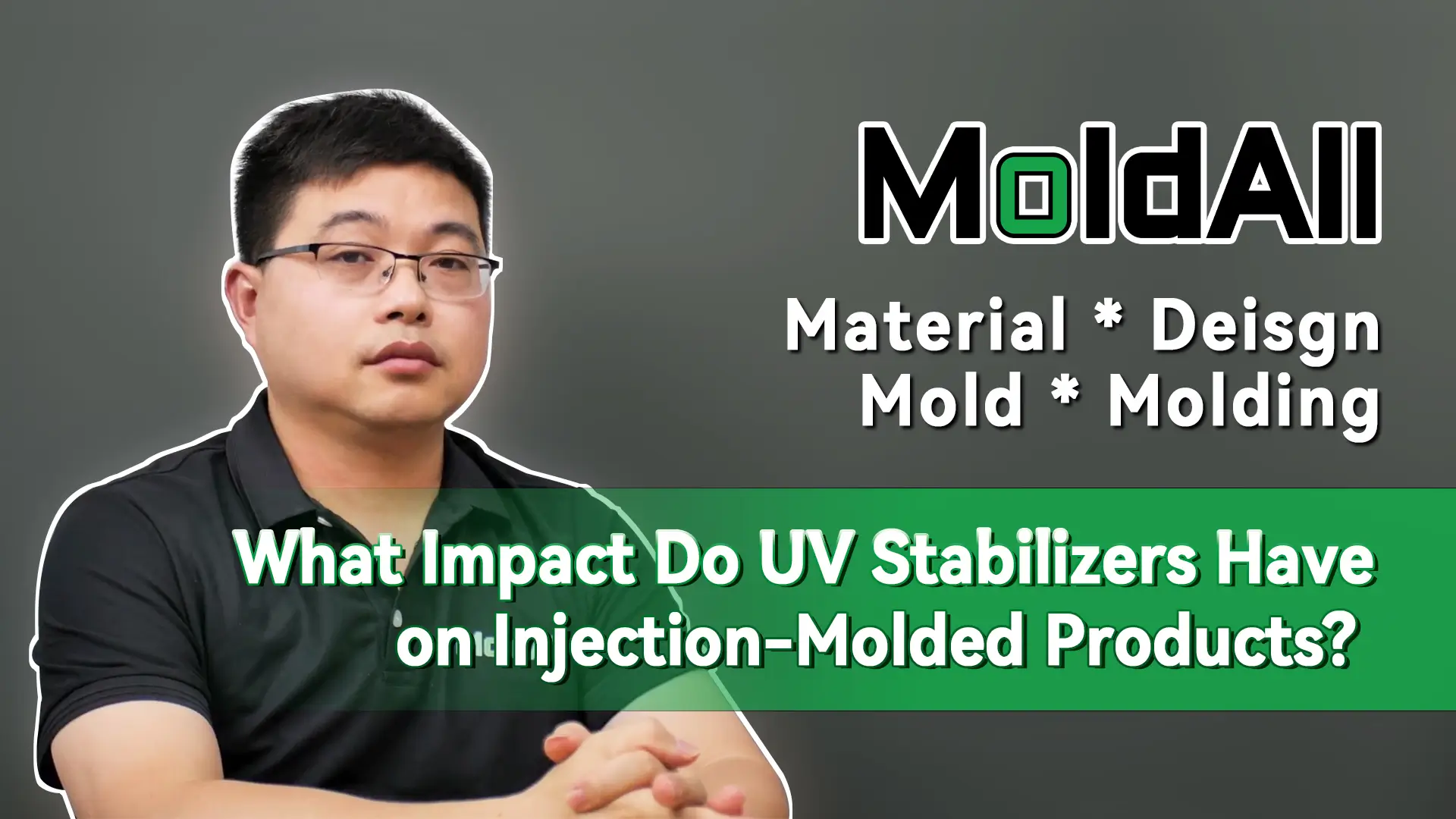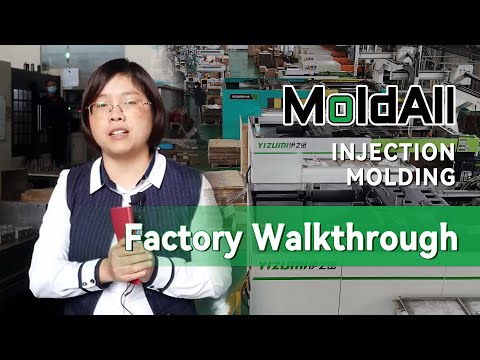
Back in my early days at the mold factory, I quickly learned that UV rays could be a silent yet powerful adversary to our creations.
UV stabilizers protect injection-molded products from UV-induced degradation by absorbing or blocking harmful rays, preserving material integrity and prolonging product lifespan.
While UV stabilizers have been a game-changer in prolonging the lifespan of plastic products, knowing which type suits your project can make all the difference. Each stabilizer has unique properties and applications, and understanding these can truly elevate your design game. Let’s dive deeper into how they can transform your creations and boost durability.
UV stabilizers prevent UV-induced degradation in plastics.True
UV stabilizers absorb or block UV rays, protecting plastics from degradation.
All UV stabilizers have the same application in products.False
Different UV stabilizers have specific applications based on material needs.

- 1. How Do UV Stabilizers Work in Plastics?
- 2. What Are the Different Types of UV Stabilizers?
- 3. Why Are UV Stabilizers Important for Outdoor Products?
- 4. How Do UV Stabilizers Affect Product Design and Manufacturing?
- 5. What Are the Latest Trends in UV Stabilizer Technology?
- 6. How Can You Choose the Right UV Stabilizer for Your Project?
- 7. Conclusion
How Do UV Stabilizers Work in Plastics?
Ever wonder how your outdoor furniture withstands the sun’s relentless rays year after year? UV stabilizers might just be the unsung heroes behind that durability.
UV stabilizers shield plastics from UV radiation, preventing polymer breakdown and preserving color, strength, and flexibility, thereby extending product lifespan.

The Mechanism of UV Stabilizers
I remember the first time I truly appreciated the magic of UV stabilizers. It was during a summer barbecue when a friend asked why my patio chairs hadn’t faded like theirs. That’s when it clicked for me—these tiny compounds are like sunglasses for plastics, shielding them from the sun’s harmful UV rays. But how exactly do they pull off this feat?
UV stabilizers operate by absorbing or reflecting the ultraviolet radiation that would otherwise break down the plastic’s polymer chains1. Imagine them as a protective layer, like sunscreen, but for your plastic products.
- Absorbers: These little warriors soak up UV radiation and transform it into harmless heat, keeping it from cracking or weakening the material.
- Reflectors: They work by bouncing the UV light away from the plastic surface, much like wearing a wide-brimmed hat on a sunny day.
Types of UV Stabilizers
During my early days in product design, I learned about different UV stabilizers and their specific roles. Here’s a quick rundown:
| Type | Function | Example |
|---|---|---|
| UV Absorbers | Absorb UV light and convert it to heat | Benzotriazoles |
| Hindered Amine Light Stabilizers (HALS) | Neutralize free radicals formed by UV exposure | NOR-HALS |
Importance in Product Design
Incorporating UV stabilizers into product design isn’t just a technicality—it’s crucial for preserving the beauty and functionality of our creations. When I design outdoor furniture or automotive parts, I always consider how they’ll stand up to sun exposure over time. It’s not just about preventing fading or maintaining that fresh-from-the-factory look; it’s also about ensuring that the products we design are robust enough to last.
UV stabilizers also help in maintaining color fastness, preventing fading, and ensuring the structural integrity of materials exposed to sunlight over time. This is particularly significant in regions with high sun exposure.
Applications Across Industries
UV stabilizers aren’t just for patio furniture. They’re vital across various industries, including automotive and consumer goods. In the automotive sector, they’re essential for keeping both the exterior and interior components in top shape. Think about your car’s dashboard—it has to endure a lot of sun!
In consumer electronics, I see UV stabilizers playing a key role in keeping products like smartphones2 looking sleek and new despite constant handling and sunlight exposure.
Understanding how UV stabilizers work allows designers like me to make informed choices about materials, ultimately enhancing product longevity and performance. So next time you’re basking in the sun, spare a thought for these unsung heroes quietly doing their job.
UV stabilizers convert UV light to visible light.False
UV stabilizers convert UV light to heat, not visible light.
Hindered Amine Light Stabilizers neutralize free radicals.True
HALS neutralize free radicals formed by UV exposure.
What Are the Different Types of UV Stabilizers?
Ever wondered how your favorite outdoor gear stays vibrant and durable under the scorching sun?
UV stabilizers, including UV absorbers, hindered amine light stabilizers (HALS), and quenchers, protect materials from UV light damage, enhancing durability and performance.

Understanding UV Absorbers
I remember the first time I had to design a product that would be exposed to harsh sunlight—it was a real eye-opener! UV absorbers are like the unsung heroes of the material world. They absorb harmful UV radiation and cleverly convert it into heat, which is then dissipated. Think of them as sunblock for your products. They’re especially handy for transparent materials3 like certain plastics and coatings. Benzophenones and benzotriazoles are some of the go-to options here.
The Role of HALS
Hindered Amine Light Stabilizers (HALS) always remind me of a friend who seems to keep calm in any storm. They don’t absorb UV light themselves but work behind the scenes to neutralize free radicals formed during photo-oxidation. This is crucial for applications involving polyolefins4 and coatings, providing long-lasting protection. HALS are a bit like those friends who always have your back, no matter how sunny or stormy it gets.
Functionality of Quenchers
Quenchers might not be the most popular kids on the block, but they play a vital role in niche applications where high-energy UV exposure is frequent. They deactivate excited molecular states, preventing reactions that lead to degradation. It’s like having a night watchman for your materials, ensuring nothing goes wrong when the sun’s energy peaks.
Comparative Overview
| Type | Function | Common Use |
|---|---|---|
| UV Absorbers | Absorb and dissipate UV radiation | Transparent plastics |
| HALS | Neutralize radicals formed during photo-oxidation | Polyolefins and coatings |
| Quenchers | Deactivate excited molecular states | Specialized polymers |
Every UV stabilizer type has its unique strengths, much like every tool in my workshop has its purpose. Choosing the right one depends on the specific needs of the material and application. You can dig deeper into the world of stabilizer formulations5 to learn more.
UV absorbers convert UV radiation into heat.True
UV absorbers dissipate harmful UV radiation as heat, protecting materials.
HALS absorb UV light to prevent degradation.False
HALS do not absorb UV light; they neutralize radicals formed during degradation.
Why Are UV Stabilizers Important for Outdoor Products?
Ever wondered why your outdoor furniture still looks new after years in the sun? The secret lies in UV stabilizers.
UV stabilizers are essential for outdoor products, protecting them from UV-induced damage by absorbing or blocking harmful rays, thus preventing fading, cracking, and deterioration, and ensuring longevity and vibrancy.

Understanding UV Radiation
Remember those times you left a plastic chair outside all summer, only to find it cracked and faded by fall? That’s the sneaky work of ultraviolet (UV) radiation from the sun. These invisible rays can wreak havoc on outdoor materials, leading to color loss, brittleness, and even structural breakdown over time. Exposure to UV rays6 is a common issue for many outdoor products.
Role of UV Stabilizers
Think of UV stabilizers as the guardians of your outdoor treasures. They’re like tiny superheroes embedded in the materials, absorbing or deflecting harmful rays to protect the surface. Whether it’s the deck chairs you love or the glossy finish on your car, these stabilizers help keep everything looking as good as new.
| Type | Function |
|---|---|
| Absorbers | Absorb UV radiation and dissipate it |
| Blockers | Reflect or scatter UV rays |
| Quenchers | Deactivate radicals formed by UV exposure |
Applications in Various Materials
- Plastics: Ever noticed how your outdoor furniture still looks decent after several seasons? That’s thanks to integrated stabilizers7 that prevent yellowing and strength loss.
- Paints and Coatings: These often come with UV blockers to maintain their color pop and sheen.
- Textiles: Your favorite outdoor cushions resist fading because of stabilizers that ensure long-lasting vibrancy.
Types of UV Stabilizers
- Hindered Amine Light Stabilizers (HALS): I once had a client who swore by HALS for their patio sets because they effectively prevent degradation by scavenging free radicals.
- UV Absorbers: These convert harmful rays into harmless energy, offering a protective shield over your products.
Knowing the specific needs of your product is key to picking the right stabilizer. Consider factors like where you live, how you’ll use the product, and what it’s made of to make the best choice.
Industry Insights
Incorporating UV stabilizers into your designs isn’t just about durability; it’s about giving consumers more satisfaction and value. I’ve seen firsthand how this proactive approach not only extends product life but also supports sustainability by reducing the need for frequent replacements. Exploring cutting-edge technologies8 in stabilizers can offer a competitive edge in product development.
UV stabilizers prevent UV-induced material fading.True
UV stabilizers absorb or block harmful rays, reducing fading in materials.
All UV stabilizers reflect UV rays to protect materials.False
Some stabilizers absorb UV radiation, not all reflect it.
How Do UV Stabilizers Affect Product Design and Manufacturing?
Ever wondered why some outdoor furniture stays vibrant while others fade away?
UV stabilizers protect polymers from UV degradation, enhancing durability, color retention, and mechanical properties in plastic products, crucial for effective product design and manufacturing.

The Role of UV Stabilizers in Product Design
As a designer, there’s always this satisfying moment when the vibrant colors you chose for a product not only come to life but stay that way for years. That’s where UV stabilizers come into play. They give us the freedom to experiment with vibrant colors9 without worrying about them fading away under the sun. Picture this: designing garden furniture that’s as bold and fresh after years of sun exposure as it was the day it left the factory. However, achieving this requires a careful balance of aesthetics and practicality, considering both cost and effectiveness.
Impact on Manufacturing Processes
I remember one challenging project where we were integrating UV stabilizers into our manufacturing process. It was like piecing together a complex puzzle. The choice of stabilizer affected everything from mold flow10 to cycle times, which in turn influenced our product’s final quality. It’s fascinating yet daunting to see how selecting the right stabilizer for materials like PVC or polypropylene can make or break the production process.
A table showcasing common UV stabilizers and their properties might include:
| Stabilizer Type | Application | Benefits |
|---|---|---|
| Hindered Amine Light Stabilizers (HALS) | Outdoor furniture | Long-term stability |
| UV Absorbers | Automotive parts | Effective in thin sections |
| Quenchers | Packaging films | Cost-effective |
Chemical Mechanisms and Effects
Diving into the chemistry behind UV stabilizers can feel like unraveling a mystery. For instance, UV absorbers11 convert harmful radiation into harmless heat, while HALS tackle free radicals head-on during photo-oxidation. It’s a bit like choosing the right superhero for your material – ensuring it retains strength, no matter how harsh the environment.
Real-World Applications
But it’s not just about plastics. UV stabilizers are vital for coatings, paints, and other materials needing protection from sunlight. In automotive manufacturing, these additives are the unsung heroes that keep cars looking sleek and structurally sound despite constant sun exposure. Selecting the right stabilizer involves weighing factors like environmental exposure and durability needs against costs. And that’s what empowers designers like me to create products that meet industry standards and customer expectations.
Using tools like CAD software12, I can simulate UV exposure effects, ensuring that our designs not only look good but last long in the real world. It’s this blend of art and science that makes my work as a product designer both challenging and incredibly rewarding.
UV stabilizers can prevent color fading in outdoor furniture.True
UV stabilizers are used to maintain vibrant colors in products exposed to sunlight.
All UV stabilizers work by converting UV light into visible light.False
Some UV stabilizers convert UV light into heat, not visible light.
What Are the Latest Trends in UV Stabilizer Technology?
Have you ever wondered how UV stabilizers keep your favorite products from fading under the sun? Let’s dive into the latest breakthroughs that are transforming this technology.
Recent UV stabilizer trends emphasize eco-friendly formulas, nanomaterials, and multifunctionality to improve durability and efficiency, meeting environmental standards important for the plastics and textiles industries.

Eco-friendly Formulations
As I reflect on the ever-increasing environmental concerns, it’s no surprise that sustainable UV stabilizers13 are now more sought after than ever. The industry is witnessing a shift towards formulations that cut down on volatile organic compounds (VOCs) and boost biodegradability. I’ve noticed companies adopting green chemistry principles to shrink their ecological footprint, which is truly inspiring.
Advanced Nanomaterials
Nanotechnology is a game-changer in UV stabilizer effectiveness. By incorporating nanoparticles, manufacturers achieve top-notch protection using fewer materials. This not only ups the cost-effectiveness14 but also trims down the weight of the final products. It’s like packing a punch in a much lighter package.
Table: Benefits of Nanomaterial UV Stabilizers
| Benefit | Description |
|---|---|
| Enhanced Durability | Provides longer-lasting UV protection. |
| Weight Reduction | Lowers product weight by using minimal materials. |
| Cost-Effective | Reduces costs due to smaller quantities needed. |
Multifunctional Stabilizers
I’ve always believed in working smarter, not harder, and the rise of multifunctional stabilizers aligns perfectly with this philosophy. These stabilizers double as antioxidants and color protectants15, offering comprehensive protection in one go. This multifaceted approach simplifies manufacturing and boosts product performance.
Market Dynamics and Innovations
The UV stabilizer market is booming, driven by demands in sectors like automotive, construction, and consumer goods. With innovations like smart stabilizers16 that adapt to varying UV intensity levels, we’re setting new benchmarks for quality and performance. It’s exciting to see where this will lead us.
Industry Applications and Future Prospects
Integrating these trends can profoundly impact industries such as plastics, coatings, and textiles. For example, eco-friendly stabilizers resonate well with sustainable practices in fashion, while nanomaterials suit lightweight electronic components perfectly. Staying updated with these developments helps professionals like me make informed choices about material selection17 and investment opportunities in UV stabilizer technology.
Eco-friendly UV stabilizers reduce VOC emissions.True
These formulations focus on reducing volatile organic compounds.
Nanomaterial UV stabilizers increase product weight.False
They actually lower the product weight by using minimal materials.
How Can You Choose the Right UV Stabilizer for Your Project?
When I first tackled the challenge of UV stabilization in my designs, it felt like navigating a maze without a map.
Choose the right UV stabilizer by assessing your project’s material type, environmental exposure, and application needs to effectively protect against UV degradation.

Understanding UV Stabilizers and Their Importance
Let me take you back to a time when I was working on a sleek outdoor gadget. I remember standing in my workshop, sunlight pouring through the windows, wondering if all my hard work would withstand the harsh Canadian sun. That’s when I realized the importance of UV stabilizers—they’re like sunscreen for your projects, preventing fading, cracking, and general wear. Picking the right UV stabilizer18 can make or break the durability of what you create.
Types of UV Stabilizers
Here’s what I’ve learned from my trials and errors in choosing UV stabilizers:
- Hindered Amine Light Stabilizers (HALS): These are the heroes when it comes to keeping surfaces smooth and colors vibrant over time. They tackle those pesky free radicals that cause damage, something I’ve seen firsthand in automotive parts.
- UV Absorbers: Perfect for projects where clarity is crucial, like clear films or coatings. I’ve used these when creating transparent components that need to stay crystal clear despite sun exposure.
- Quenchers: Although less common in my work, quenchers are useful for specialized applications where controlling excited molecules is key.
| Type | Benefits | Applications |
|---|---|---|
| HALS | Long-lasting protection | Automotive parts, outdoor furniture |
| UV Absorbers | Maintains transparency | Clear films, coatings |
| Quenchers | Specialized uses | Selective industry applications |
Factors to Consider When Choosing a UV Stabilizer
Here are some lessons I’ve picked up along the way:
- Material Compatibility: It’s crucial to ensure that your chosen stabilizer plays nicely with your materials. Once, I learned this the hard way after a batch of components didn’t fare well against sunlight.
- Environmental Conditions: I’ve designed products for a variety of climates, and trust me, intense sunlight or high humidity requires beefier stabilization.
- Specific Application Needs: You need to know what you’re aiming for—whether it’s keeping colors bright or maintaining structural integrity.
- Cost-Effectiveness: It’s always a balancing act to find a solution that suits your budget without skimping on quality.
- Regulatory Requirements: Make sure your designs comply with industry standards for UV protection—this can save you from future headaches.
For those venturing into extreme environments, this guide on extreme condition stabilizers19 is a great resource. Remember, investing time in picking the right stabilizer now will save you a lot of hassle later on.
HALS are ideal for automotive parts.True
HALS offer long-lasting protection, making them suitable for automotive parts.
UV absorbers cannot maintain transparency.False
UV absorbers are designed to maintain transparency while protecting against UV rays.
Conclusion
UV stabilizers protect injection-molded products from UV degradation, enhancing durability and color retention. Different types serve unique applications, crucial for outdoor and automotive designs.
-
Explores the science behind polymer degradation due to UV exposure, helping you understand why protection is necessary. ↩
-
Learn how UV exposure impacts smartphones and why stabilizers are crucial for their longevity. ↩
-
Clicking this link provides insights into how UV absorbers work specifically with transparent materials, enhancing your understanding of their application. ↩
-
Explore this link to discover how HALS are applied in polyolefins, ensuring long-lasting protection against UV degradation. ↩
-
Find detailed information on different UV stabilizer formulations to better understand their practical applications and benefits. ↩
-
Discover how UV radiation impacts materials, causing fading and structural damage over time. ↩
-
Learn how integrating stabilizers in plastics prevents yellowing and maintains strength. ↩
-
Explore new technologies that offer advanced protection against UV damage. ↩
-
Explore how UV stabilizers maintain color integrity under sunlight, ensuring products look vibrant longer. ↩
-
Learn how different stabilizers impact mold flow dynamics, affecting manufacturing efficiency. ↩
-
Understand the chemical processes by which UV stabilizers protect materials from degradation. ↩
-
Discover how CAD tools help predict product longevity under UV exposure, aiding design optimization. ↩
-
Explore sustainable alternatives to traditional UV stabilizers, which offer reduced environmental impact and improved biodegradability. ↩
-
Understand how nanotechnology in UV stabilizers leads to cost savings and material efficiency. ↩
-
Learn how multifunctional UV stabilizers integrate various protective roles into a single solution. ↩
-
Discover how smart UV stabilizers adapt to environmental changes, enhancing product performance. ↩
-
Find guidance on selecting the right materials for effective UV stabilization across different applications. ↩
-
This link provides detailed information on different types of UV stabilizers and their applications, aiding in selecting the most suitable one for your needs. ↩
-
Explore strategies for selecting UV stabilizers that withstand extreme environments, ensuring durable and reliable product performance. ↩






